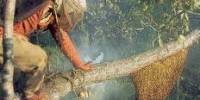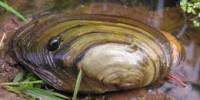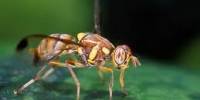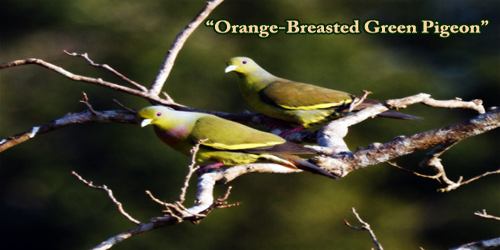Introduction
Turmeric (Curcuma longa) is a rhizomatous herbaceous perennial plant of the ginger family, Zingiberaceae. It is native to tropical South Asia and needs temperatures between 20°C and 30°C (68°F and 86°F) and a considerable amount of annual rainfall to thrive. Plants are gathered annually for their rhizomes, and propagated from some of those rhizomes in the following season.
When not used fresh, the rhizomes are boiled for several hours and then dried in hot ovens, after which they are ground into a deep orange-yellow powder commonly used as a spice in curries and other South Asian and Middle Eastern cuisine, for dyeing, and to impart color to mustard condiments. Its active ingredient is curcumin and it has a distinctly earthy, slightly bitter, slightly hot peppery flavor and a mustardy smell.
Plants and plant based medicaments are the basis of many of modern pharmaceuticals we use today for various ailments. The phytochemical research based on ethno-pharmacological information is generally considered an effective approach on the discovery of new anti-infective agents from higher plants.
Curcuma is a rhizomatous herb belonging to Zingiberaceae family. The plants belonging to this family are found to be a rich source of substances of phytochemical interest. Number of plants from this family is used in traditional system of medicine [2]. Turmeric powder, curcumin and its derivatives and many other extracts from the rhizomes were found to be bioactive [3]. The main activities of essential oils and plant extracts have been found to be antimicrobial, anti inflammatory, anticancer and antiviral.
Curcuma longa is a perennial plant having a short stem with large oblong rhizomes, which are often branched and brownish yellow in colour [3]. Various experiments proved the presence of bioactive compounds from curcuma and show that it has antimicrobial, anti-inflammatory, anticancer and antiviral activities.
The present study involves the use of various techniques like Gas chromatography, Mass Spectrometry, Thin layer chromatography analysis for phytochemical characterization of the herbal drug preparations. The antimicrobial activity can be tested using agar diffusion technique.
By using this work, the antibacterial drugs can be developed or can be used for the improvement of the existing medicines.
History of Turmeric (Curcuma longa)
Turmeric (Curcuma longa) and several other species of the curcuma genus grow wild in the forests of Southern Asia including India, Indonesia, Indochina, nearby Asian countries, and some PacificIslands including Hawaii.
In the Indian Ayurveda system of herbal medicine, turmeric is known as strengthening and warming to the whole body. Traditional uses in India include
- to improve digestion,
- to improve intestinal flora,
- to eliminate worms,
- to relieve gas,
- to cleanse and strengthen the liver and gallbladder,
- to normalize menstruation,
- for relief of arthritis and swelling,
- as a blood purifier,
- to warm and promote proper metabolism correcting both excesses and deficiencies,
- for local application on sprains,
- burns, cuts, bruises, insect bites and itches,
- for soothing action in cough and asthma,
- as antibacterial and anti-fungus
According to Michael Moriarty, “The ancient Hawaiians used this herb for many things, including
- the prevention and treatment of sinus infections (it is very astringent and appears to pull mucus out),
- ear infections (swimmers ear) and
- Gastrointestinal ulcers.
Turmeric is eaten as a food both raw and cooked throughout Asia. While turmeric root looks much like ginger root, it is less fibrous and is more chewable, crunchy, and succulent. The fresh root (not the powder) has a somewhat sweet and nutty favor mixed with its bitter flavor. As a result, it is not unpleasant to eat and not difficult to chew. It is sometimes chewed plain or chopped up and put in salads raw. Traditional use includes mashing/grinding it in a mortar to make a paste to mix with other spices for flavoring in curries. In modern times, the most common use is of the dried root powder as the base of most curries in India and other nearby countries.
Another traditional use of turmeric is as a food colorant and dyes for cloth – in both cases a cheaper alternative to saffron. It was and is used in religious ceremonies and offerings – often representing life, purity, and prosperity.
The old herbals of Europe make little if any mention of turmeric. Marco Polo refers to turmeric as Indian saffron used for dying cloth. Michael Castle man writing in 1991 says: “The ancient Greeks were well aware of turmeric, but unlike its close botanical relative, ginger, it never caught on in the West as either a culinary or medicinal herb.
It was, however, used to make orange-yellow dyes. In the 1870’s, chemists discovered turmeric’s orange-yellow root powder turned reddish brown when exposed to alkaline chemicals. This discovery led to the development of turmeric paper to test for alkalinity.
European and American herbalists up until the late 20th century had little interest in turmeric. For example, in all of Dr. Christopher’s writings the only mention of turmeric I can find is that it is listed as an alternative tonic. In Jethro Klaus’s book Back to Eden, I can find no mention of turmeric at all. This indicates to me that the herbal schools Dr. Christopher and Jethro Klaus’s went to were not aware of the potential of turmeric which was well known to Asian herbalists. I also suspect that there was a disconnect between Asian and western herbalists. Michael Castleman comments: “American chemists used turmeric paper, but not even the botanically oriented 19th century Eclectic physicians had much use for turmeric itself, except to add color to medicinal ointments.”
In one western herbal from the early 20th Century, I do find a discussion of turmeric. This is in Maude Grieve’s book A Modern Herbal. She gives a botanical description and the constituents of the herb as if the herb was of some importance, but then under Medicinal Actions and Uses she says: “Turmeric is a mild aromatic stimulant seldom used in medicine except as a coloring. It was once a cure for jaundice. Its chief use is in the manufacture of curry powders. It is also used as an adulterant of mustard and a substitute for it and forms one of the ingredients of cattle condiments. … Turmeric paper is … used as a test for alkaloids and boric acid.” This disregard of turmeric as an important nutritional and medicinal herb continued in western herbalism up until the late 20th Century.
However, even as Maude Grieve was writing, the roots of turmeric’s emergence as a prominent healing herb were starting to grow. Daniel B. Mowrey tells the story: “Serious research on turmeric began in Germany, in the early 1920’s. Sesquisterpenes in the essential oil of turmeric were isolated in 1926 and to them was ascribed the therapeutic activity. Later, a team of scientists compared the effects of whole extract, the essential oil, and the water-soluble extract.
In 1936, curcuma was compared to whole extract and several isolated constituents.The results of the experiment show that turmeric acts in the following ways:
- Turmeric stimulates the flow of bile; several constituents have this property.
- The increased flow of bile depends in part on the contraction of the gallbladder and in part on the increase in bile secretion.
- The stimulation of bile depends mostly on the presence of essential oil.
- The flavonoids cause the contraction of the gallbladder and thereby increase the effective emptying of this organ.
While studies were being pursued in European, primarily German laboratories, Asian researchers were independently validating the same properties of turmeric. But their interest extended to the liver protective and curative principles of turmeric and in a series of brilliant papers they reported important findings in that area.
So far what has clearly been demonstrated is that turmeric possesses anti-hepatotoxic activity on the order possessed by other liver-protective herbs such as milk thistle and licorice. Other research has helped establish the effects of turmeric on the blood. For example, as many of the common curry herbs do, curcumin prevents large fluctuations in blood cholesterol after meals.
The potent anti-inflammatory activity (in the essential oil and in curcumin) of turmeric has been substantiated in other research. Like other non-steroidal anti-inflammatory agents (such as
Licorice root), curcumin appears to act through some sort of adrenal mechanism (when the adrenals are removed, turmeric has no effect).
In the mid-20th century, western herbalists began taking note and considering turmeric for herbal use – initially in Germany. In Rudolph Weiss’s book, Herbal Medicine, first published in 1961, discusses the potential use of turmeric for the digestive system: “Its usefulness as a gallbladder remedy in the narrower sense has been demonstrated. The cholagogue and choleretic action is quite powerful. The people of Java call this plant temoe lavak. In India and other Asian countries it has a long tradition as a popular remedy for jaundice and liver disease.
There is no doubt that it can be effective, particularly where bile flow needs to be thoroughly stimulated. However, Dr. Weiss then discourages the use of turmeric and makes comments which appear to me to reflect hearsay and not personal use but it is doubtful if it achieves more than our native drugs. The yellow pigment has marked irritant effect on the gastric mucosa, so that caution is indicated where there is a tendency to hyper acidity or where there is simple irritable stomach. Observations made in India have shown the powerful and lasting irritant effect of curry on the stomach. This discussion obviously ignores the potential other causes of gastric irritation such as excessive use of oils (which are often rancid) and overcooking literally for hours at very high temperatures – typical of Indian curries. This type of attitude (arrogance) may have delayed western use of turmeric for several decades.
Few contemporary herbalists recommended turmeric through the 1980’s and when they did it was for limited or special uses such as liver tonic or menstrual regularity. However, by the early 1990’s a chorus of prominent western herbalists (including Murray, Hobbs, Castleman, Mowrey, Duke, Clark, Tierra, and Pederson), began promoting the use of turmeric for several major health problems. As Michael Castleman put it,Western herbalists, wake up. Turmeric is a healer.
Medicinal use of Curcuma Longa in Bangladesh
Description:
The plant of Turmeric is a herbaceous perennial, which is 60 -90 cm high. It has a short stem. It has large leaves oblong and up to one meter long. Flowers of the turmeric appear on a spike like the stalk. Its flowers are yellow white in colour. They are sterile and don’t produce viable seed. The lamina is green above and pale green below, and is 30 -40 cm long and 8 -12 cm wide. Approximately 30 flowers are produced in a spike. Inflorescence is a central spike of 10 -15 cm in length. Its pant looks like the ginger pant. It is the widely cultivated tropical plant which is grown from sea level to 1200 meter MSL.
Cultivation methods:
Turmeric plant is panted in the month of September to October. It grows in light black, black clayey loams, and red soils in irrigated and rainfed conditions. The rhizomes are planted 5 7 cm deep. This crop is planted by the small rhizomes with one or two buds. It is harvested after 9 -10 months of planting. The lower leaves turn yellow and fall with age.
Medicinal uses:
- It is taken as the blood purifier and is very useful in the
- common cold,
- leprosy,
- intermittent,
- affections of the liver,
- dropsy,
- inflammation and
- Wound healing.
- The rhizome of the turmeric plant is highly aromatic and antiseptic.
- It is even used for contraception, swelling, insect stings, wounds, whooping cough, inflammation, internal injuries, pimples, injuries, as a skin tonic.
- Sweetened milk boiled with the turmeric is the popular remedy for cold and cough.
Other uses:
- The powered rhizome of this plant is used as an condiment and as an yellow dye.
- Its is used to colour and flavour the foodstuff.
- It is used in the preparation of medicinal oils, ointments and poultice.
- It is even used in the cosmetics.
Cultural Importance:
For thousand of years it has been used in the Hindu religious ceremonies. It is the common belief among the the Hindus that Turmeric improves fertility. The dry turmeric root is considered as the symbol of purity and prosperity. It is used in Indian rites and rituals. Turmeric mixed in water is poured on the God and Goddesses. The dried turmeric roots in betel leaves are given to the women during the ceremonies as they are considered as fertile and bring good luck. Turmeric power is applied on the main entrance of the Indian Houses. The priests in the temples put tilak on the forehead with the turmeric power. Married women in India have to put Sindur a vermilion paste (mixture of turmeric with camphor).
I. Some medicinal properties and important uses of Curcuma longa (Turmeric):
Curcuma Longa extract has significant effects in the laboratory on arthritis, amyloid-beta (Alzheimer’s polymers), cancer and diabetes.
Properties:
- Anti-oxidant.
- Anti-arthritis: inhibiting inflammation, possibly inhibits something in the pathway of Cox-2 but not Cox-2 itself; not only does it not cause ulcers but is currently being used experimentally as a treatment for ulcers in western countries.
- Anti-Alzheimer’s: inhibits formation of, and breaks down, Amyloid-beta oligomers (fibres) and aggregates in rodents.
- Anti-platelet.
- Anti-cancer effects: causes apoptosis in various cancer cell types including skin, colon, forestomach, duodenum and ovary in the laboratory; we await clinical trials in humans.
- Anti: -viral, -fungal, -bacterial effects (inhibits Helicobacter Pylori) Inhibits NFkappaB, 5-lipoxygenase, glutathione S-transferees and cytochrome P-450 isoenzyme 1A1.
- Anti-diabetic effects in rodents; we await clinical trials in humans.
II. Uses in folk medicine
In Ayurvedic practices, turmeric has many medicinal properties and many in South Asia use it as a readily available antiseptic for cuts, burns and bruises. It is also used as an antibacterial agent.
It is taken in some Asian countries as a dietary supplement, which allegedly helps with stomach problems and other ailments. It is popular as a tea in Okinawa, Japan. Pakistanis also use it as an anti-inflammatory agent, and remedy for gastrointestinal discomfort associated with irritable bowel syndrome, and other digestive disorders. In Afghanistan and northwest Pakistan, turmeric is applied to a piece of burnt cloth, and placed over a wound to cleanse and stimulate recovery.
Indians, in addition to its Ayurvedic properties, use turmeric in a wide variety of skin creams that are also exported to neighboring countries.
III. Preliminary medical research
- Turmeric is currently being investigated for possible benefits in Alzheimer’s disease, cancer, arthritis, and other clinical disorders.
IV. Cosmetics
Turmeric is currently used in the formulation of some sunscreens. Turmeric paste is used by some women to keep them free of superfluous hair.
V. Dye
- Turmeric makes a poor fabric dye as it is not very lightfast (the degree to which a dye resists fading due to light exposure). However, turmeric is commonly used in Indian clothing, such as saris.
VI. Gardening
- Turmeric can also be used to deter ants. The exact reasons why turmeric repels ants is unknown, but anecdotal evidence suggests it works
VII. Ceremonial uses
- Turmeric is also used in various rituals, such as the turmeric ceremony .
- It is also used in Pujas to make a form of the elephant God Ganesha. It is made by mixing turmeric with water and forming it into a cone-like shape.
- Fresh root is some times tied around the pot boiling the ceremonial rice.
- As a part of the marriage ritual, a piece of dried turmeric tied with string is sometimes used to replace the Thali necklace temporarily or permanently.
Bioactivity Guided Separation of Raw Turmeric (Curcuma longa)
The powdered dry rhizome of the plant Curcuma longa, commonly known as turmeric, has been used for centuries as a traditional medicine to treat inflammatory diseases. Identification and characterization of the active compounds of turmeric is subjective and very few official methods of analysis are available in the literature. In order to test the anti-inflammatory activity, an in vitro test system has been established. HL-60 cells were differentiated and exposed to lipopolysaccharide (LPS) from E.coli (1 g/ml) in the presence or absence of botanical compounds for 24 hrs. Supernatants were collected and analyzed for the production of tumor necrosis factor alpha (TNF) and prostaglandin E2 (PGE2) by standard ELISA assays. In order to verify the amount and identity of active components in the raw turmeric samples, analytical and preparative HPLC methods were developed. Bulk raw powdered turmeric rhizomes were obtained from two different commercial sources. These samples were subjected to various aqueous and organic extractions and the resulting fractions were analyzed by HPLC. None of the aqueous extracts expressed biological activity, but the crude organic extracts were capable of
inhibiting LPS induced TNF(IC50 = 15 and 25 g/ml) and PGE2 (IC50 = 1 g/ ml) production. One of the crude organic extracts was subjected to further separation using preparative HPLC and each of the resulting ten fractions was tested as described previously. These fractions had differing biological activity, ranging from no activity to IC50 < 1 g/ml. Additional analytical methods were developed to further separate the most active fractions to test for anti-inflammatory.
Demand for botanical products has grown dramatically over the past ten years, and markets are still robust. More than 120 million Americans try herbs, vitamins and dietary supplements to treat a variety of illnesses.
Turmeric, the powdered rhizome of the herb Curcuma longa is used extensively in curries and mustards as a coloring and flavoring agent. In the Ayurvedic medicine turmeric has traditionally been used as a treatment for inflammation, skin wounds and tumors.
In preclinical animal studies turmeric has shown anti-inflammatory, cancer chemo preventive and antineoplastic properties.
Experimental Procedures:
- Various reversed phase HPLC methods were developed to separate and analyze the raw turmeric sample and its fractions.
- Agilent 1100 preparative/purification system (preparative gradient pumps, multi-wavelength detector and sampler/fraction collector) was used.
- Signals were observed at 425 and 250 nm.
- Fractions were tested for ability to inhibit LPS-induced production of TNF and PGE2 in HL-60 cells.
Conclusion:
- The initial separation and further subfractionation of the complex turmeric mixture was achieved.
- The resulting fractions had different biological activity.
- In the subfractions tested, the inhibition of LPS induced TNF-and PGE2 production was weaker than in the original parent fraction.
















